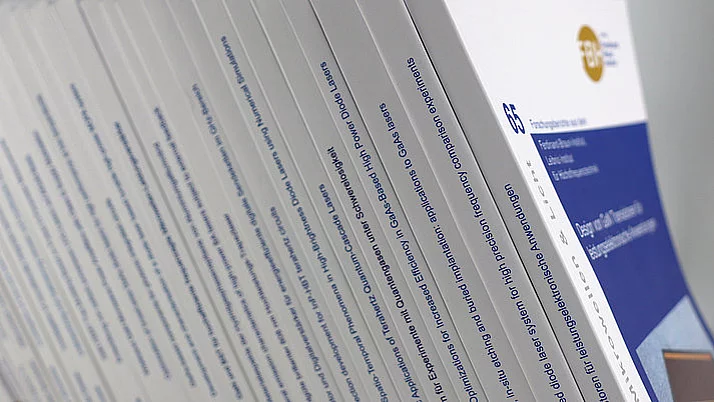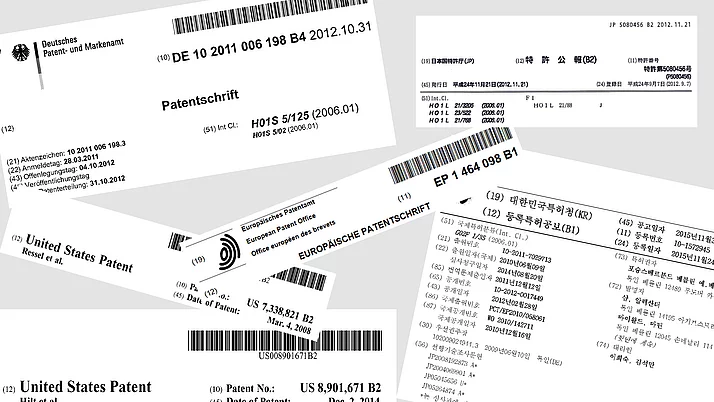Approaches for higher power in GaAs-based broad area diode lasers
S. Arslan, G. Erbert, A. Boni, M. Wilkens, A. Maaßdorf, J. Fricke, A. Ginolas and P. Crump
Published in:
IEEE High Power Diode Lasers and Systems Conference (HPD 2019), Coventry, UK, Oct. 9-10, pp. 51-52, ISBN: 978-1-7281-3097-2 (2019).
Abstract:
We present here a comparison of design approaches for improved continuous wave electro optical performance in GaAs-based high power broad area diode lasers emitting at 970 nm. Diode lasers with 90 µm stripe width based on established asymmetric large optical cavity designs achieve high peak conversion efficiency (68% at 5 W for 3 mm resonator length) but efficiency drops rapidly with power. In spite of halved electrical and thermal resistance, devices with longer resonators (6 mm) operate with only marginally improved efficiency and power (efficiency at 12 W increases from 57 to 59%, peak power increases from 13 to 14 W). In contrast, development in epitaxial design enables strong improvement in power and efficiency at high power. Specifically, recent progress in extreme double and triple asymmetric epitaxial designs have enabled devices with 90 µm stripe width and 4 mm resonator length to improve their efficiency at 12 W output power from 56% to 66%, with their peak (saturation) power rising from 14 to 19 W.
Ferdinand-Braun-Institut, Leibniz-Institut für Höchstfrequenztechnik, Gustav-Kirchhoff-Str. 4, 12489 Berlin, Germany
Index Terms:
ASLOC, EDAS, ETAS, diode lasers, high power, epitaxial designs, conversion efficiency.
Copyright © 2019 IEEE - All rights reserved. Personal use of this material is permitted. However, permission to reprint/republish this material for advertising or promotional purposes or for creating new collective works for resale or redistribution to servers or lists, or to reuse any copyrighted component of this work in other works must be obtained from the IEEE.
Full version in pdf-format.


